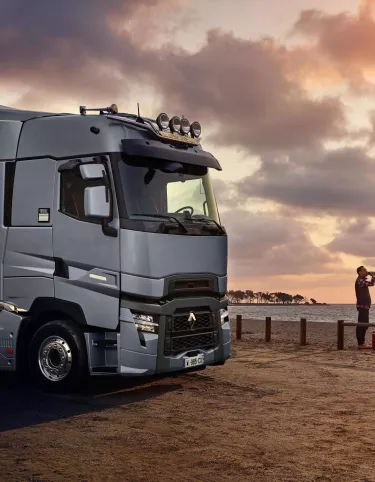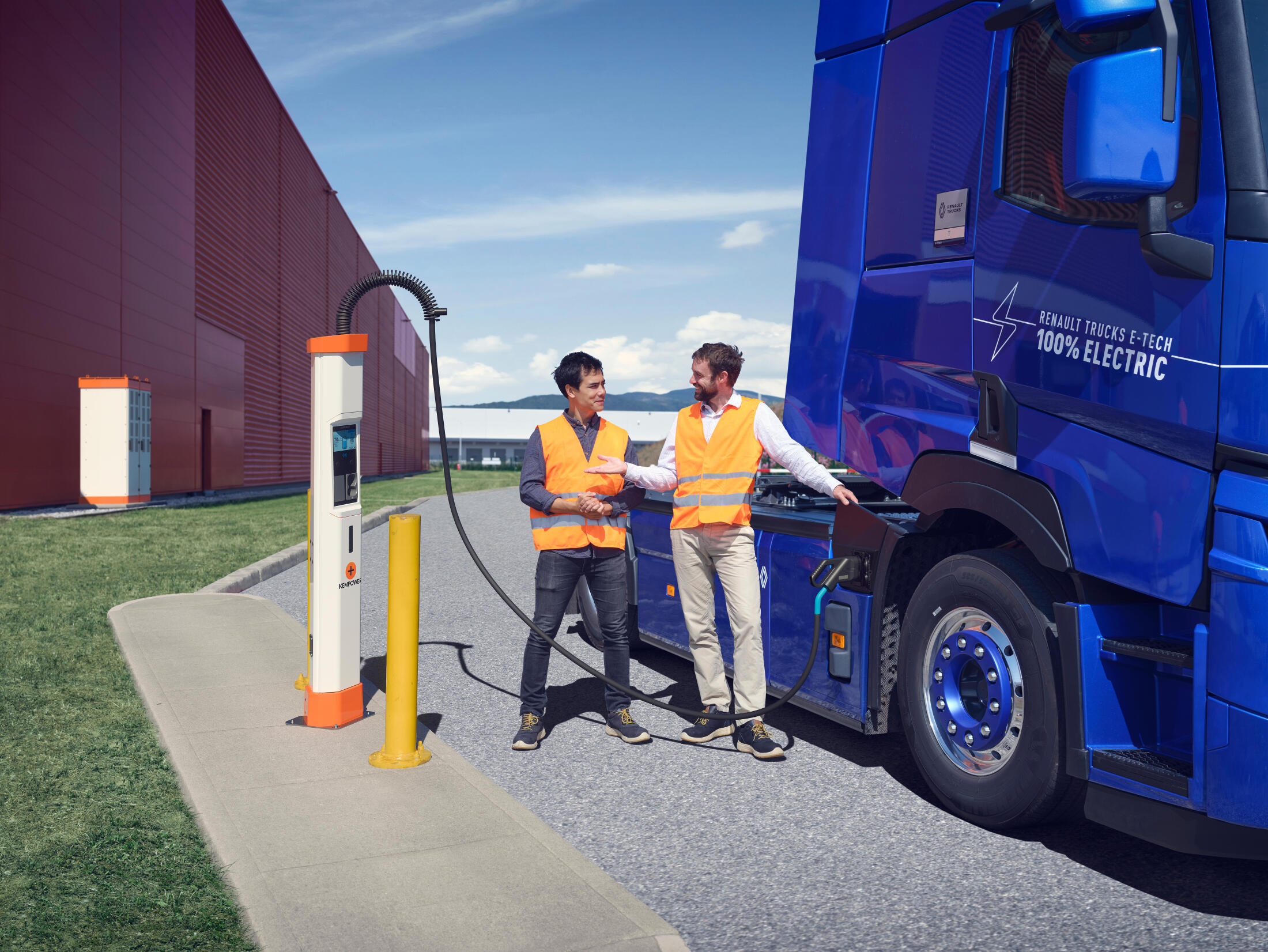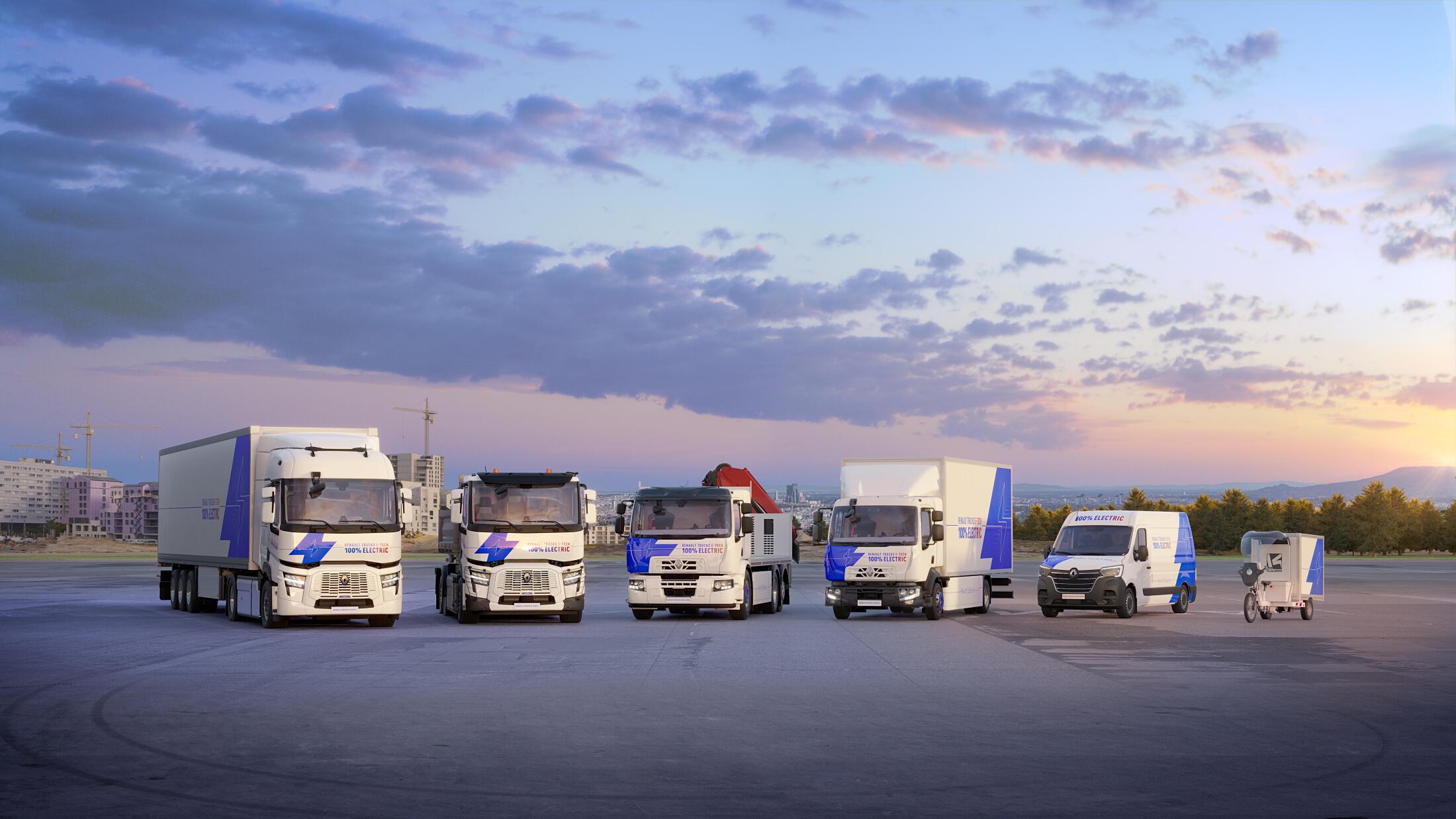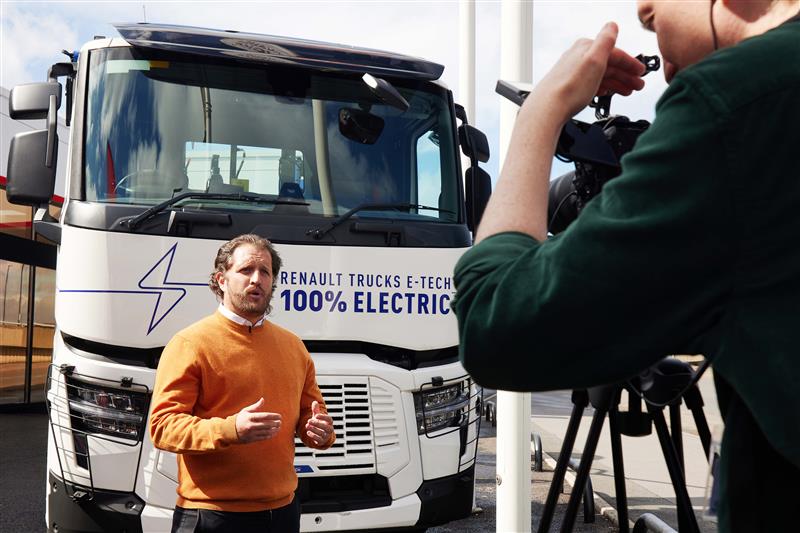Welcome to Renault Trucks UK
List of content
What types of energy are available today to power a truck?
Electromobility
Green Energies
Nov. 6 2023

What types of energy are available today to power a truck?
There are 4:
- Diesel
- Gas
- Hydrogen
- Electricity
Let’s review them one by one to see which will be the most effective in reducing CO2 emissions.
Note that all the CO2 emission reduction figures quoted are calculated from cradle to grave, in other words, they take into account all of the CO2 emitted, from the production of energy and vehicles to the end of the vehicles' life. These calculations were made for a 16-ton vehicle.
Biodiesel
Biodiesel a fatty-acid ester produced from vegetable oils such as rapeseed, generates 65% less CO2 emissions than fossil-based diesel fuel. Thiscould be a good supplement for de-carbonising the road transport of goods. Today, it is obviously one of the cheapest solutions.
However, the use of biodiesel for road transport is restricted by the limited quantities available, and its production requires more arable land, which can mean the risk of deforestation and competes with other sectors, such as food production.
By 2040, it is very likely that no more than 10% of trucks will be using this type of fuel.
Synthetic fuels (XTL, HVO), second-generation biofuels, provide further reductions in CO2 emissions. Obtained from animal fats, used oils, or forestry residues, they do not compete with food products. However, the quantities currently available are very small and will probably remain so for the next few decades, since the amount of usable raw materials is limited.
E-diesel, produced using renewable electricity, water and CO2 from the atmosphere, also reduces CO2 emissions by 65% compared to fossil diesel fuels. However, making it available requires massive investments that are still not a sure bet.

Gas
Here, we are talking about methane, which exists in two forms: fossil natural gas and biogas produced from the fermentation of gasification of organic matter (biomass).
Fossil natural gas only allows to reduce CO2 emissions by 5% compared to diesel fuel. It is thus not a viable option for de-carbonisation.
Bio-Methane or biogas, produced from the fermentation or gasification of organic matter, allows to emit 75% less CO2 than with diesel fuel. However, the quantities of biogas available are, and will remain, limited. Thus, for its use, the transport sector will be competing with other business sectors, and its price (4 times higher than natural gas in 2019) is bound to rise due to the probable decrease in public funds for its production.
Biogas emits nitrogen oxides (NOx), which will disqualify it for use in the city centres. Lastly, its potential greenhouse gas effect, which contributes to global warming, is 86 times that of CO2 over an 80-year period and thus requires very close monitoring to minimize the risks of leaks during its production and transport.
About 10% of trucks, probably heavy, long-distance and construction vehicles, will likely run on biogas as of 2040.
Hydrogen
The hydrogen we have access to presently, known as grey hydrogen, is produced from fossil methane and emits 14% more CO2 than fossil-based diesel fuel. Switching to green hydrogen, produced using renewable, electric-powered electrolysis would, however, allow to reduce CO2 emissions by up to 62%.
This transition will take place slowly and at the cost of heavy investments, and road transport will still be at a point where it is competing with other sectors that have no other way to de-carbonise. Its use on a broad scale cannot be expected before the next decade.
Hydrogen fuel cells are the most advanced technology using this energy today. Such cells convert hydrogen and oxygen into electric power. An alternative use of hydrogen is in combustion engines that can use a less pure form and require less cooling. However, a downside is that such systems emit a small amount of NOx, which makes their use in cities unlikely, and they consume a bit more hydrogen than fuel cells.

Electric power
On average, in Europe, de-carbonised electric power produced from renewable energy sources or nuclear energy currently allows to reduce CO2 emissions by 55% compared to fossil-based diesel fuel. In some countries, such as France, savings can be as high as 80%.
The technology for electric motors is readily at hand, and the working charge of batteries is steadily increasing.
Free of direct emissions effects, electric trucks are the most efficient solution to urban pollution problems. They can be recharged at night - during off-peak hours - on either an industrial, three-phase connection or a basic charging terminal, they run silently, and they provide great comfort of use for drivers.
Although electric vehicles continue to be more expensive than those running on diesel fuel, the gap is continuously closing, and some applications, such as trash collection, are already fully competitive. Starting in 2025, the total cost of owning and operating a battery-powered electric truck for city use will be less than that of a diesel fuel truck. By that date, all types of urban uses will be covered by electric trucks.

Electric mobility, the solution for carbon-neutral freight
Today’s industry landscape is far from simple for transportation operators: regulatory and financial constraints, restrictions on access to city centres, pressure from customers wanting to use only environmental-friendly transportation providers, fierce competition between providers, price wars... constraints like these make it difficult to choose a suitable vehicle that runs on carbon-neutral energy.
At Renault Trucks, we made the choice to go electric back in 2010, quite simply because electric battery vehicles are the most sustainable and least carbon-intensive solution for the years to come.
For our customers who have chosen electric mobility, the balance of positive and negative impacts is also favourable, with arguments such as the disappearance or drastic reduction in polluting emissions (CO2, NOx, noise), greater comfort for drivers and improved image for their companies.
- A “cradle to grave” analysis of trucks, of their total cost of operation, of their ease of use, and of the availability of de-carbonised fuels, has led us to foresee the use of the four available fuel types by 2023 in the following proportions by 2040:
- 0% of trucks using fossil-based diesel fuel or natural gas.
- Up to 20% of trucks running on biofuels for the heaviest uses (long-haulers, heavy construction, etc.).
- Around 80% of trucks will be equipped with either recharged electric batteries or de-carbonised hydrogen fuel cell for the most demanding uses. The exact proportion of use of these two power sources is still unknown.
Our electric trucks have been mass-produced at our plant in Blainville-sur-Orne (France) since 2020, and today we have the 2nd largest fleet of electric vehicles on the road, with more than 600 trucks currently operating. By the end of June 2023, the more than 8 million kilometres they have travelled will have saved 7,500 tonnes of CO2.

Learn about the energy transition journey with 'Zeroing In'

Zeroing In is our new video series launched to provide electromobility support. Watch our latest episodes here.

